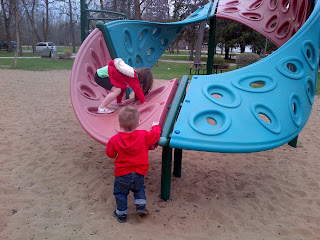Mindfulness teaches us to be present and to be where we are. It teaches us to leave the past and future thoughts and get the most out of what you are doing at the present moment. And that's one way of dealing with the problem of not being able to focus in the present moment.
However, when you really are not getting your priorities addressed, you are probably in the wrong place. Being mindful will also help you know when you are in the wrong place and get to the right place.
I don't claim to be perfectly mindful. Nor do I claim to be 100% dedicated to my meditation practice. But because of my practice and knowledge, I know when I need to step back and get re-aligned. When I'm not being fully present, I usually realize it pretty quickly and get mindfully present. I highly recommend it for an amazing life and business with amazing results. Lately, though, I've been losing sight of my priorities. And the universe has a funny way of showing us when things are out of whack!
A lot of external demands are getting my attention lately. One of those is my 2 1/2 year old waking almost every night again for about a month, hence, I'm working on less sleep and much less deep sleep - which is what we require for our cognitive function to be at its best. That one can't really be controlled - except that I need to get to bed earlier (which is a blog in itself!).
However, I also have had other demands that I've been giving my attention to - others wanting to meet, the feeling that I must be networking all the time, responding to emails as soon as possible, the ever lengthening list of newsletters I must read, taking care of my family, being there for my friends in need - you know that list. Well, yeah, my list is looking like this lately. And if I wasn't going to do something about it, the universe was.
Last night, I had an awful dream and woke with a feeling that I couldn't shake. I had a 9:00 full-day networking event scheduled, I had to pack for a trip I'm leaving for tomorrow, and I have at least four items on my list that I must get done before I leave. I managed to get my daughter to daycare (my hubby is traveling for work) and arrive just a few minutes into the 9:00 session. I sat through the first session trying desperately to pay attention but my mind wandered to my 'to-do' list. Knowing I have full control of my thoughts, I began to practice accepting that I have a lot to do and I'm here now so be here.
I managed to get through the morning, but I was almost forcing my pitch to potential clients. I certainly was not in the right head space. Then, I found out that I was on the list for pitching my business one on one to potential clients for the afternoon. Last week, my printer broke, and I did not get my brochures printed for this event - however, I was OK with that because I didn't think I was on that list! I took a moment to think about what would happen if I pitched my business without feeling prepared. And I decided to give up my coveted seat for the afternoon session to someone on the wait-list. I was feeling guilty while driving home, my mind was in the clouds, and I was stopped by a police officer for speeding! Yes! I got a ticket!
I really need to be in the office right now. I need to take care of business. I need to focus. I need to clear off my desk. Although all of the things demanding my attention are important, my priorities lie at taking care of other things, including taking care of my sleep!
Being mindful is not woo-woo and fluff. In fact, it's as practical as it gets. When you are mindful, you inquire about your feelings and thoughts. When mind wandering started for me this morning (and recent weeks), I questioned what was going on for me to be unable to focus. Lack of sleep was the first answer, of course. But I continued to dig and got to the real answers - for me it is literally to spend time in the office getting things done and stop feeling guilty about not networking enough.. When you have the real answers, you can find the solutions that really work, rather than the band-aid ones.
If your list is growing and you really feel you are in the wrong place, try closing your eyes, pay attention to the feeling and sound of your breath, and question - what do you really need to be doing in order to enable yourself to feel present in your life? What is the ONE thing you can do that will make a big difference to your focus and productivity? Then do that. Scratch off all the things that aren't real priorities and get your priorities straight. And while you're at it, spend a little time meditating - because that will help you feel better in all ways.
Tina Pomroy uses mindfulness as a tool for managers, leaders, and business owners to be highly productive, lead high performing teams, and experience peace and happiness at work and in life.
























